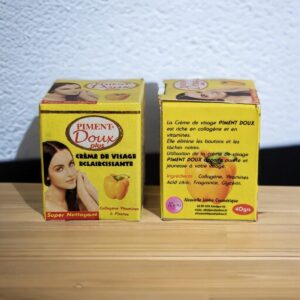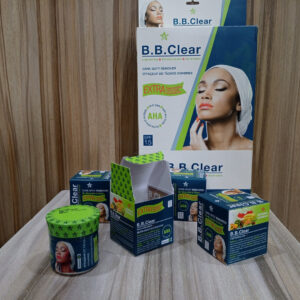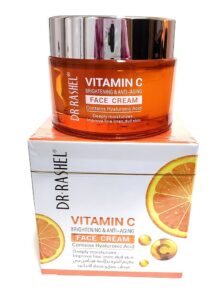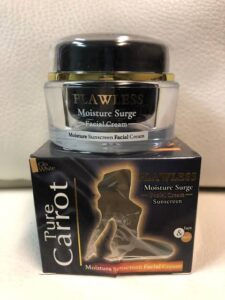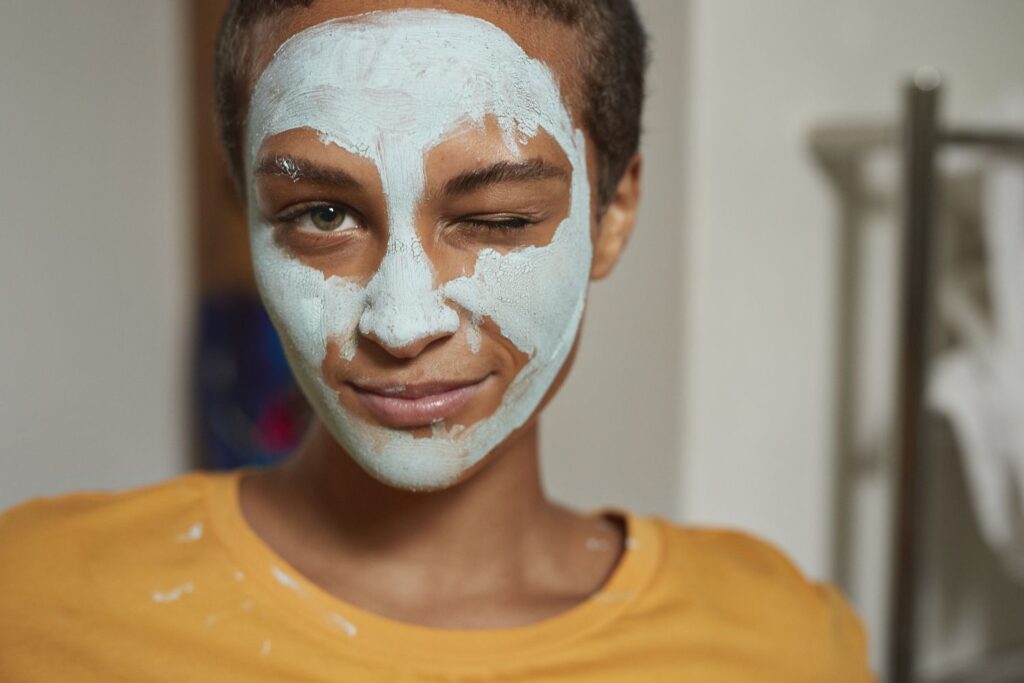
During the pandemic, many people were looking for how they can make their own home made face mask at home for their glowing skin, there were several options for at-home beauty treatments. While some (reluctant self-waxers) found the shift difficult, it also helped make the homemade face mask popular, which is among the most fulfilling (and useful) skin care solutions available.
Regardless of your access to spas or salons, self-care can be achieved with a homemade face mask created with basic components. Not only are you spending the time to apply glow-inducing serum to your face, but you also know exactly where each ingredient originated—from your pantry or refrigerator, chosen by you, the person who knows your skin the best.
You can check my list of carefully selected Face creams for you HERE.
Things You Must Know Before You Do Your Own Home Made Face Mask Foe Glowing Skin:
However, it’s crucial to remember that just because a mask is easy to use, has a “natural” label, or the internet instructed you to do it, doesn’t mean It is inherently safe for your skin, and your face will appreciate it.
As a general guideline, you shouldn’t take random medicines without first considering how they can effect your body, says board-certified dermatologist and Yale School of Medicine professor Mona Gohara, M.D., in an interview with SELF. “Using the incorrect ingredients can quickly cause your at-home beauty treatment to go awry.”
In general, Dr. Gohara advises DIY maskers to stay away from the following ingredients: lemon juice and apple cider vinegar (whose strong acidity can cause burning and irritation), spices with strong yellow coloring like turmeric (which can cause discoloration), and cinnamon (a well-known skin irritant).
There isn’t much study on using common cupboard and refrigerator ingredients as skincare products, but the easy-to-use components listed below are usually well-tolerated.
Oats:
Colloidal oatmeal can help trap in moisture and improve dryness. You can buy colloidal oatmeal or simply combine rolled oats until they become flour.1. Additionally, studies have demonstrated that its anti-inflammatory qualities help to relieve inflamed and/or itchy skin.
Avocado:
In addition to vitamin E, an antioxidant that may guard against free-radical damage, it has high concentrations of lipids that can moisturize skin.
Honey:
Honey is a naturally occurring antibacterial and anti-inflammatory substance that may lessen irritation and redness.4 Additionally, it has been demonstrated to help hydrate and exfoliate skin.5. According to Dr. Rodney, raw honey is better since it can have greater health benefits, such as more antioxidants.Six
Green Tea:
It has a high polyphenol content, which makes it an excellent source of antioxidants with anti-inflammatory and antibacterial properties.
Yogurt and Milk:
They have proteins that may soothe irritated skin and lactic acid, which is a well-known exfoliant with hydrating qualities, according to Dr. Gohara.
Aloe Vera:
Renowned for having calming, anti-inflammatory, and hydrating qualities.10
Regardless of the components of your DIY face mask, Dr. Rodney advises always doing a patch test first because every person’s skin is different and may respond differently to particular chemicals. Here’s how to do it: A tiny bit of your preferred mask should be applied behind your ears. Rinse it off after 15 minutes, and then wait 24 hours to see if any redness or irritation appears.
Finally, remember not to create a large quantity of your homemade mask in advance. According to Dr. Rodney, “you need to use a homemade mask as soon as you create it.” When exposed to air and light, it may not only rapidly lose its efficacy but, depending on the contents, the longer it remains, the more likely it is to grow bacteria, which could block your pores and result in acne. No, it is not our goal in this instance.
9 Simple Home Made Face Mask For Glowing Skin Recipes
Urged to unleash your inner artistry in the “cosmetic kitchen,” so to speak? I’ve compiled a list of 9 DIY mask recipes that dermatologists recommend you try at home. Some come from blogs and cosmetic brands, while some are straight from the physicians themselves. Don’t worry if you’re still among those who say “why make it when I can buy it?” Drs. Gohara and Rodney have chosen choices for you as well.
1 Simple Manuka Mask
Benefits that could arise include: less redness and/or irritation; more moisture; and exfoliation.
The steps:
Dab damp skin with a thin layer of Manuka honey (made by bees that pollinate the blossoms of the native Manuka bush in New Zealand; it has been demonstrated to have even greater antibacterial properties than regular honey variations).
After using it for fifteen minutes, gently rinse it off with a hydrating cleanser.
2 Beautifying Brown Sugar Scrub Mask
Potential benefits include increased hydration and exfoliation.
The steps:
Combine 2 tablespoons brown sugar and 2 tablespoons coconut oil.
Apply with gentle circular strokes to the face, allow to sit for five minutes, and then rinse with warm water.
3 Glowy Green Tea Mask from Dr. Rodney
The possible benefits Decreased inflammation and/or redness, elevated moisture
The steps:
Add just enough water to create a paste after adding 1 Tbsp. each of matcha green tea, raw honey, and baking soda.
Use on face, let sit for fifteen minutes, and then wash with warm water.
4 Blemish-Fighting Milk Mask
Potential benefits include exfoliating and decreased acne (anti-bacterial).
The steps:
To make a thin paste, combine 2 Tbsp. raw honey, 2 Tbsp. nutmeg, and 2 tsp. milk.
Put on the face, let it sit for fifteen minutes, and then wash it off with warm water. Apply a moisturizer that has been recommended by a dermatologist afterward.
5 Two-Ingredient Oatmeal Mask
The possible benefits Decreased inflammation and/or redness, elevated moisture
The steps:
Mix ½ cup colloidal oatmeal with 1/4 cup warm water.
Put on the face, let it sit for fifteen minutes, and then wash it off with warm water.
6 Comforting Chocolate Mask
The possible benefits include more moisture, exfoliation, and a chocolate scent.
The steps:
Mix 1 tablespoon cream, 2 tsp raw honey, and 3 tablespoons unsweetened cocoa powder. Add ¼ cup milk and whisk to make a paste.
Apply to face, let sit for ten to fifteen minutes, or until completely dry, and then wash with warm water.
7 Hydrating Avocado Mask
Benefits that could arise include: less redness and/or irritation; more moisture; and exfoliation.
The steps:
Combine 1 tsp raw honey, ½ mashed ripe avocado, and 1 tsp plain full-fat yogurt.
Put on the face, let it sit for fifteen minutes, and then wash it off with warm water.
8 Calming Honey and Aloe Vera Mask
The possible benefits Decreased inflammation and/or redness, elevated moisture
The steps:
To make a paste, mix one tablespoon of pure aloe vera gel with one tablespoon of raw honey.
After applying evenly to the face and leaving it on for 20 to 30 minutes, rinse it off with warm water.
9 Soothing Oatmeal Mask
The possible benefits Decreased inflammation and/or redness, elevated moisture
The steps:
Combine 1 tsp baking soda and 2 Tbsp colloidal oatmeal; add enough water to create a paste.
Put on the face, let it sit for fifteen minutes, and then wash it off with warm water.
Those of us who would like to purchase it rather than make it ourselves…
Conclusion
Maintaining a consistent skin care routine can help reduce oiliness, treat acne, and enhance your complexion. However, don’t believe that excellent outcomes require a posh spa.
You can give your face the nutrition and moisture it needs by creating a home made facial mask with items from your kitchen for your glowing skin.


